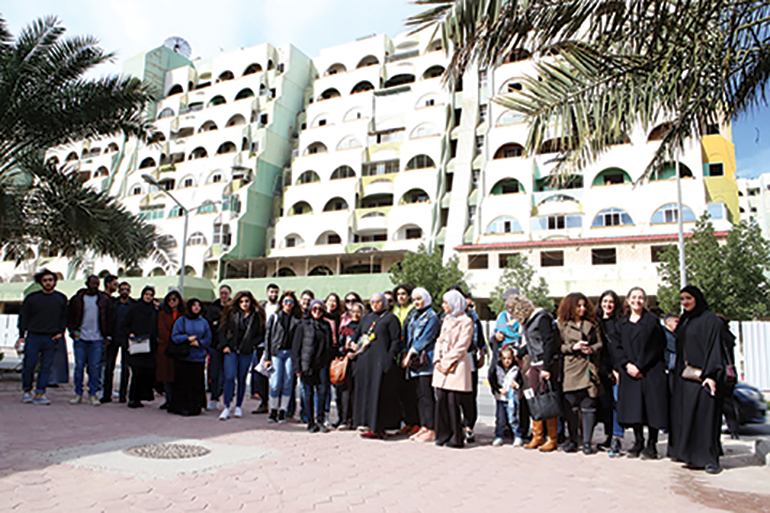
KUWAIT: A
gathering to walk, talk and envision Kuwait's most recognizable and historic
landmarks - the residential Al-Sawaber complex - was held in Sharq yesterday.
The walking tour was organized by 'Save Al-Sawaber' to talk about the history
of the complex, which may soon become a memory after it is demolished.
Mohammad
Al-Jassar, a faculty member at Kuwait University's College of Architecture,
told Kuwait Times that the gathering included several architects who are
interested in the design of the complex, and they are asking the government not
to demolish it. "We are here today to listen to a tour about Sawaber's
history before the demolition begins. As architects, we are hoping the complex
won't be demolished but revived by giving it to an investor. It can be turned
into a shopping area, apartments or offices with a unique architectural design.
Rather than being demolished, the team is proposing that the complex be rehabilitated
and regenerated as a mixed-use urban development building while maintaining
elements of the original character and structure," he said.
"The
demolition of the complex will result in a large amount of waste. Building
waste often includes concrete, metal, glass, plastic, wood, asphalt, bricks and
more. Not only does this pollute the land and the air, but the transportation
required to remove such waste has a major impact on the environment as well.
This is why most countries levy a tax on demolishing buildings to encourage
investors to revive them and protect the environment," said Jassar.
"Sawaber is
very valuable to the heritage of Kuwait. It also stands as a symbol of a very
important era in the history of the modern state of Kuwait. It represents the
20th century buildings of the city," said Architect Zahra Ali Baba,
Chairwoman of the Chapter of Docomomo International, which is dedicated to the
advocacy and conservation of modern heritage in Kuwait. "Sawaber was a
neighborhood where all families lived and knew each other, but in multistoried
buildings. The complex is a modern heritage building of cultural and historical
significance, but the project has now been marked for demolition," she
noted.
The government
has used various means to empty the complex of residents in order to have it
demolished. Fourteen families have refused to move and they're still in their
apartments, but most of the tenants have left. Some were offered an apartment
in Northwest Sulaibikhat, while others were offered financial compensation.
The complex was
built in 1981, designed by famed architect and urban planner Arthur Erickson.
Al-Sawaber represents a distinct architectural, economic and cultural period in
Kuwaiti history. One of the first complexes in the country, it is located on
approximately 245,000 square meters of prime real estate property in the heart
of Kuwait's financial district. The complex includes 33 buildings and more than
520 residential apartments.
By Faten Omar










